Sioux Pecan Tree
- September 18, 2023
- 0 comment
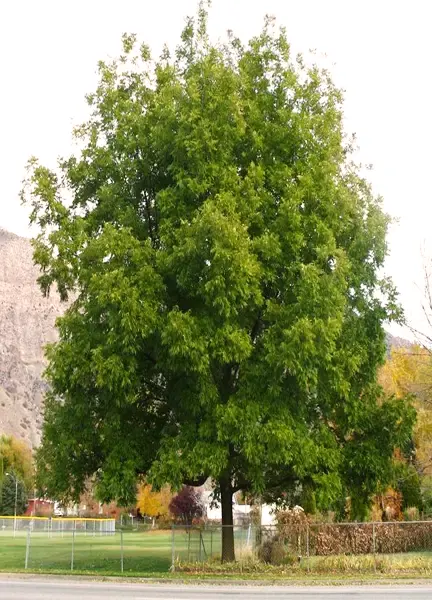
- Common Name: Sioux Pecan Tree
- Botanical Name: Carya illinoinensis ‘Sioux’
- Family: Juglandaceae
- Plant Type: Deciduous Tree
Lumber
The Sioux Pecan Tree produces high-quality lumber, although it is primarily grown for its delicious pecans rather than for timber. The wood is strong, durable, and prized for its use in furniture making and flooring.
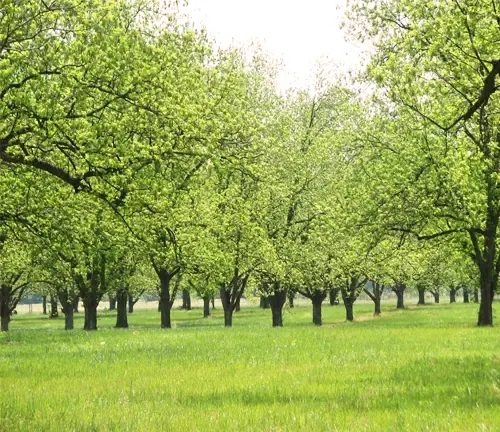
Mature Size and Growth Rate
The Sioux Pecan Tree is a moderately fast-growing tree, reaching a mature height of 70 to 100 feet (21 to 30 meters) with a spread of 40 to 75 feet (12 to 23 meters). It typically takes 10 to 15 years to start producing pecans.
Soil Type
Sioux Pecan Trees are robust and can flourish in various soil types, provided they are well-draining and fertile. While they truly thrive in rich, loamy soil that retains moisture without becoming waterlogged, they exhibit remarkable adaptability and can grow successfully in different soil textures, from sandy to clayey.

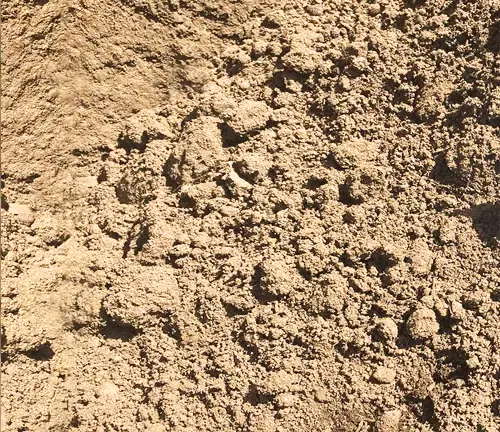
Soil Preferences
When it comes to soil preferences, these trees have a slight inclination toward slightly acidic to neutral soils. An ideal pH range for Sioux Pecan Trees falls between 6.0 and 7.0. This pH range allows for optimal nutrient uptake and overall health, although they can still tolerate minor deviations from this ideal if necessary.

Hardiness Zones
The Sioux Pecan Tree is hardy in USDA zones 5 to 9.
Sun Preference
This tree loves full sun exposure, requiring at least 6 to 8 hours of sunlight each day to produce an abundant pecan crop.
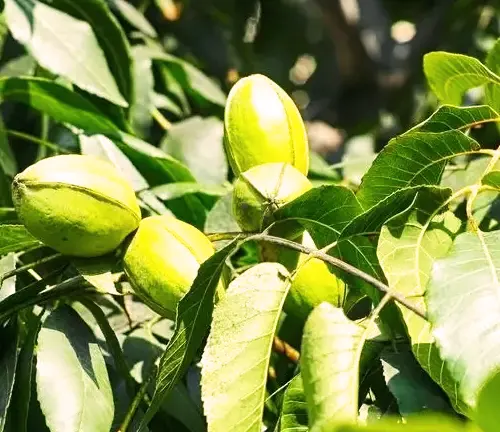
Attributes and Characteristics
The Sioux Pecan Tree stands tall with a straight trunk and a rounded canopy. Its compound leaves have 9 to 17 leaflets, and in spring, it produces inconspicuous wind-pollinated flowers. However, the highlight is its large, sweet pecans that mature in the fall. Come autumn, its foliage transforms from yellow to a rich golden brown, adding an ornamental touch to its charm.
Wildlife Value
The Sioux Pecan Tree provides food and shelter for various wildlife species. Squirrels, birds, and deer are known to feed on its nuts, while the dense foliage offers nesting sites and protection for birds.
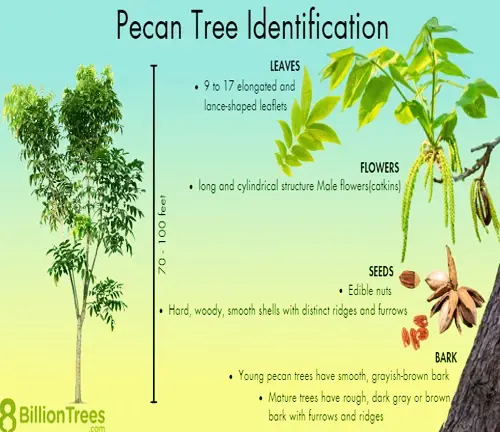
Care
Caring for Sioux Pecan Trees involves regular watering for young trees, mulching to retain moisture and prevent weed competition, late winter pruning to remove dead or crowded branches, and early spring fertilization with a balanced, slow-release formula.
Benefits
- The Sioux Pecan Tree offers a bountiful harvest of delicious, protein-rich pecans.
- It serves as a shade tree, making it a valuable addition to home landscapes.
- The wood is sought after for its lumber, used in various woodworking projects.
Invasive
The Sioux Pecan Tree is not considered invasive and poses no significant threat to native ecosystems.
Lifespan
These trees can live for several decades, often reaching 100 years or more when properly cared for.
Disadvantage
One potential disadvantage is the tree’s size, as it can become too large for small yards. Additionally, falling pecans can create a mess if not harvested.

Edible or Not
Yes, the Sioux Pecan Tree produces edible pecans that are a popular ingredient in pies, candies, and other culinary delights.
Habitat Requirements
This tree is adaptable to various soil types and can thrive in both urban and rural environments as long as it receives adequate sunlight and water.
Name of Origin
The Sioux Pecan Tree gets its name from the Sioux Native American tribe. It is a cultivated variety of the pecan tree, which is native to the United States.
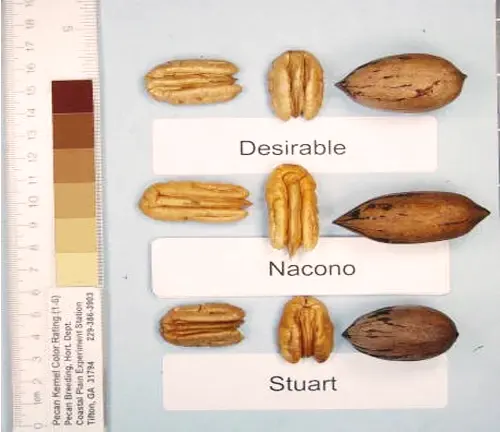
Varieties
There are numerous pecan varieties, each with slightly different characteristics. Some popular varieties include Stuart, Pawnee, and Desirable, in addition to Sioux.
Pruning
Pruning is essential to maintain the tree’s health and shape. Remove dead or diseased branches in late winter, and consider shaping the canopy to encourage a strong structure.
Propagating
Sioux Pecan Trees are typically propagated through grafting onto rootstock or by planting pecan nuts. Grafted trees tend to produce nuts more quickly than those grown from seeds.
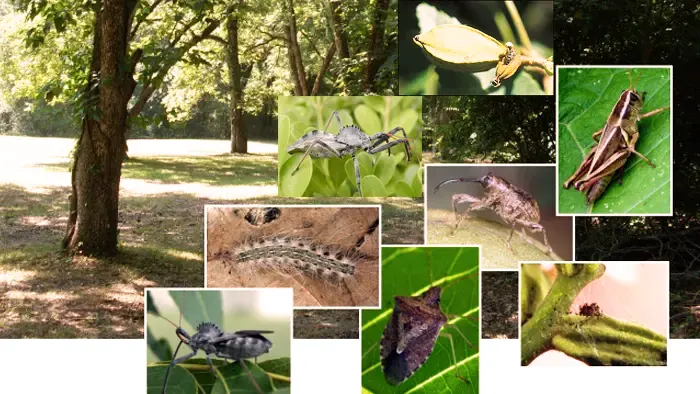
Common Pests & Diseases
Sioux Pecan Trees may face several common challenges. Pecan weevils, aphids, and hickory shuckworms are frequent pests that can affect the tree’s health and pecan production. Diseases such as pecan scab and bacterial leaf scorch can also impact these trees. Vigilant monitoring, proper care, and timely treatments are essential to mitigate these issues and ensure the Sioux Pecan’s continued well-being and prolific pecan yields.
Fun Facts
- Pecans are the only major tree nut native to North America.
- The word “pecan” comes from an Algonquian word meaning “a nut requiring a stone to crack.”
- Pecan pie is a classic Southern dessert, and the Sioux Pecan’s nuts are often used to make this delicious treat.
We invite you to explore our range of Forestry Services and discover how we can cater to your needs. Don’t miss the opportunity to experience the quality and convenience we have to offer.
Frequently Question Asked (FAQs)
- When do Sioux Pecan Trees bear fruit?
Sioux Pecan Trees typically start producing pecans around 10 to 15 years of age. - Do Sioux Pecan Trees require cross-pollination to produce nuts?
While some pecan varieties benefit from cross-pollination, the Sioux Pecan is partially self-fertile, meaning it can produce pecans with its pollen, but yields may increase with cross-pollination from another pecan variety. - How do I know when pecans are ripe for harvesting?
Pecans are ready for harvest when the outer husks split open and the nuts inside have turned brown. Shake the tree gently, and if the nuts fall easily, they are ready to be picked up. - Are pecans healthy to eat?
Yes, pecans are packed with healthy fats, fiber, and various vitamins and minerals, making them a nutritious snack when consumed in moderation.
In summary, the Sioux Pecan Tree is a versatile and rewarding addition to any landscape. Its majestic presence, delectable pecans, and adaptability make it a valuable asset. Whether for shade, aesthetics, or culinary delights, this tree offers numerous benefits and plays a vital role in supporting local wildlife. With proper care, the Sioux Pecan Tree thrives, adding natural beauty and flavorful harvests to its surroundings.


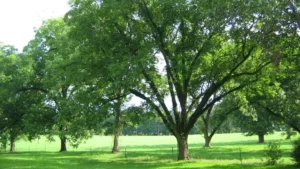
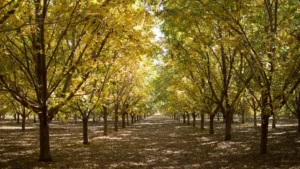
Leave your comment